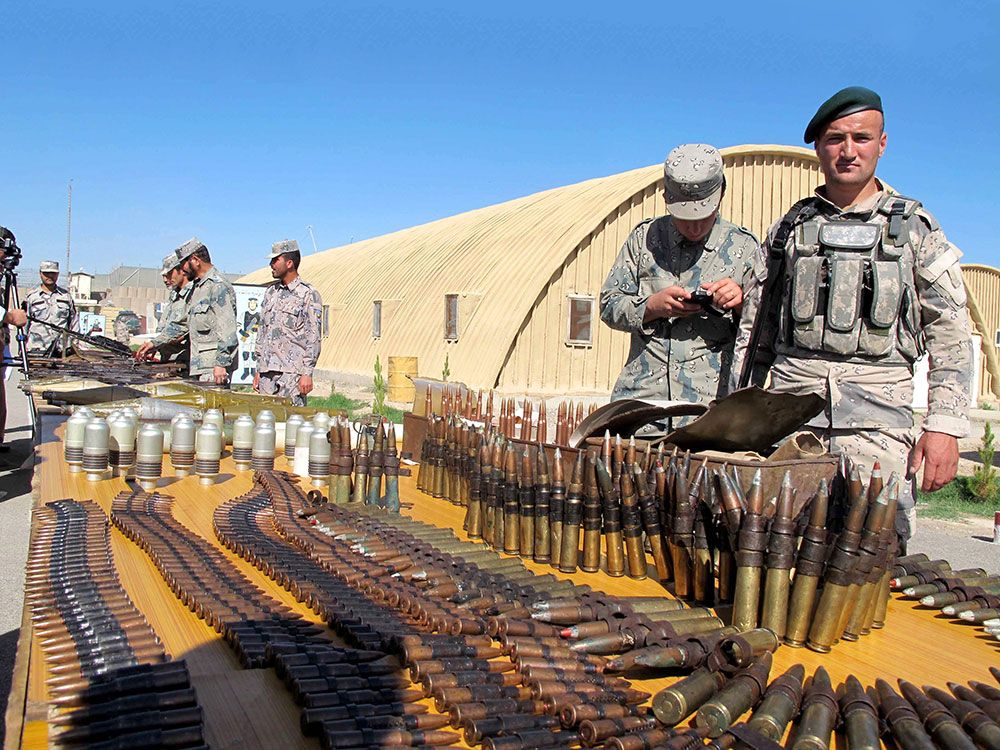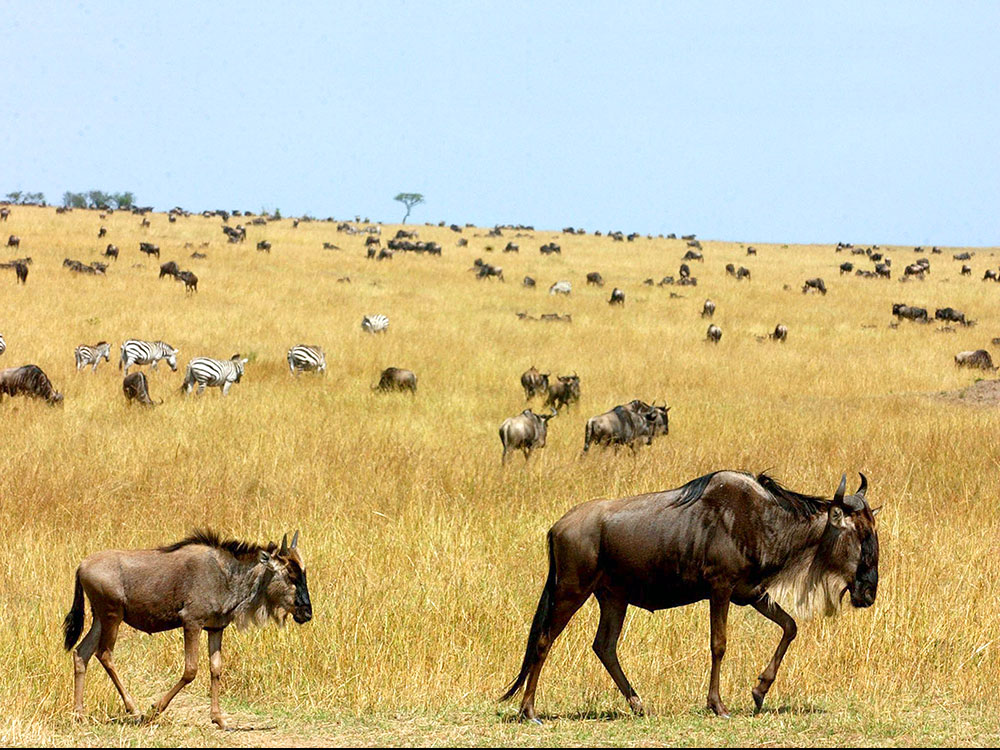The essential role of the environment is still marginal in discussions about poverty. While we continue to debate these initiatives, environmental degradation, including the loss of biodiversity and topsoil, accelerates, causing development efforts to falter,” warned Wangari Maathai, the Kenyan activist and environmentalist who won the Nobel Peace Prize in 2004 for her contribution to sustainable development, democracy and peace. Her words are now remembered, in 2010, by the United Nations Environment Program (UNEP) to underline the importance of the International Year of Biodiversity.
Launched last January by the UN, under the motto “Biodiversity is Life: Biodiversity is Our Life,” the International Year, however, does not only have the world’s poor in mind but all humanity, because what is at play is the health and the future of the Earth, our common home. Reminds Achim Steiner, Executive Director of UNEP: “Even if we act immediately, the world is doomed to lose many of its animal and plant species and this, in turn, will reduce the ability of ecosystems to deliver vital services to human populations.”
“Humans are part of nature’s rich diversity and have the power to protect or destroy it,” the Secretariat of the Convention on Biological Diversity (CBD), which is hosted by UNEP, said in summarizing the Year’s main message, with its focus on raising awareness to generate public pressure for action by the world’s decision makers. “Biodiversity, the variety of life on Earth, is essential to sustaining the living networks and systems that provide us all with health, wealth, food, fuel and the vital services that our lives depend on. Human activity is causing the diversity of life on Earth to be lost at a greatly accelerated rate. These losses are irreversible, impoverish us all and damage the life support systems we rely on every day. But we can prevent them.”
The Convention – which opened, for signature, at the Earth Summit in Rio de Janeiro in 1992, entered into force at the end of 1993 and now has 193 parties – is based on the premise that the world’s diverse ecosystems purify the air and the water that are the basis of life, stabilize and moderate the Earth’s climate, renew soil fertility, cycle nutrients and pollinate plants.
As a former UNEP Executive Director, Klaus Töpfer, puts it: “If any part of the web suffers a breakdown, the future of life on the planet will be at risk.”
An unprecedented loss
The CBD, conceived at Rio alongside with the climate change convention, acquired its key global pledge during the Johannesburg Summit of 2002, when governments agreed to achieve a “significant reduction” in the rate of biological diversity loss by 2010. However, conservation organizations acknowledge that, despite some regional successes, the target is not going to be met; some analyses suggest that nature loss is accelerating rather than decelerating. The UNEP estimates that the loss of the world’s species due to human activity is unprecedented, and is going on at a rate some experts put at 1,000 times the natural progression.
According to the International Union for Conservation of Nature (IUCN), the world’s largest coalition of environmental organizations, well over 17,000 species – out of the 47,677 the group has registered in its list as endangered – face immediate extinction. The organization affirms that the number of the endangered species rises by the day. According to the Union, some 50% of all amphibian species risk extinction. The IUCN includes in its red list of species facing extinction 70% of botanic life, 37% of freshwater fish, 28% of reptilians, 21% of mammals, and 12% of all birds. On the other hand, the World Wide Fund for Nature (WWF) estimates that, only between 1970 and 2005, some 27% of species disappeared.
Jane Smart, Director of the Biodiversity Conservation Group of the IUCN, commented: “We are facing an extinction crisis. The loss of this beautiful and complex natural diversity that underpins all life on the planet is a serious threat to humankind now and in the future.” The WWF made a symbolic list of the ten most endangered species in 2010, headed by an iconic animal – the tiger, but that includes also the polar bear, the bluefin tuna and the monarch butterfly. However, the impact over the world ecosystems of this man-made extinction threatens not only this or that familiar creature living in the wilderness.
Biodiversity is often understood in terms of the wide variety of plants, animals and micro-organisms which populate the planet. So far, about 1.75 million species have been identified, mostly small creatures such as insects and micro-organisms. Scientists reckon that there are actually about 13 million species, though estimates range from three to 100 million. Biodiversity also includes genetic differences within each species; for instance, between varieties of crops and breeds of livestock.
Another aspect of biodiversity is the variety of ecosystems such as those that occur in deserts, forests, wetlands, mountains, lakes, rivers, and agricultural landscapes. In each ecosystem, living creatures, including humans, form a community, interacting with one another and with the air, water, and the soil around them.
A heavy economic impact
The loss of biodiversity has a heavy economic impact. A study by the ‘Economics of Ecosystems and Biodiversity’ (TEEB), released in late 2009, estimated the losses caused by the decimation of fauna and flora at up to 7.2 billion US dollars per year. According to the TEEB, a European Union-sponsored project to measure the economic importance of biodiversity, between 2000 and 2050, some seven percent of the world’s gross product may be lost due to species extinction. A large on-going UN-sponsored study into the economics of biodiversity suggests that deforestation alone costs the global economy $2-5 trillion each year.
TEEB estimates that investments of just 40-45 billion dollars per year would be needed to offset such losses caused by the destruction of coral reefs, erosion, extensive agriculture, excessive harvesting for human consumption, and other phenomena, most of them caused directly or indirectly by economic activities.
Even if the situation looks gloomy, the Convention on Biological Diversity underlines that it is possible to act in order to protect the ecosystems. There has been some partial or regional successes, which will be mentioned in a new strategic outlook that will be published in May. The Executive Secretary of the Convention, Ahmed Djoghlaf, gives some examples: a slowing of Brazilian Amazonian deforestation by 74%, a reduction of 45% in the annual rate of mangrove losses, or a 26% increase in the proportion of important bird areas. The report will identify pathways towards even more optimistic outcomes that, with the help of urgent and concerted action, could avoid the most dangerous consequences of biodiversity loss.
During the International Year, national governments will seek to reach an agreement on a new biodiversity target, to be decided at the biodiversity summit that will take place in October in Nagoya, Japan. After the disappointing failure of last year’s Copenhagen UN conference on climate change, the world will hold its breath. As the analysts keep repeating: “Enough words; what we need is some action.”
The role of climate change
Ironically, climate change has a deep impact on biodiversity. And is considered to become a more significant threat in the coming decades. Already, changes in the timing of flowering and migration patterns, as well as in the distribution of species, have been observed worldwide. In Europe, over the last 40 years, the beginning of the growing season has advanced by 10 days on average. These types of changes can alter food chains and create mismatches within ecosystems where different species have evolved synchronized interdependence; for example, between nesting and food availability.
Last year, the TEEB addressed a message to the Copenhagen Summit, calling attention to the three most important issues concerning biodiversity. “We face the imminent loss of coral reefs due to climate change, with all the serious ecological, social, and economic consequences this will entail,” the study pointed out. In addition, TEEB recalled that “forests perform a valuable function in capturing and storing carbon.”
“An early and appropriate agreement on forest carbon would be a significant opportunity to mitigate climate change. It would also set the stage for related mechanisms to reward other ecosystem services from forests,” the study added.
Finally, TEEB said that “there is a compelling cost-benefit case for public investment in ecological infrastructure (especially restoring and conserving forests, mangroves, river basins, wetlands, etc.), particularly because of its significant potential as a means of adaptation to climate change.” The TEEB message was ignored.
* Coordination and editing: based on information from UNEP, IPS – Julio Godoy and BBC News – Richard Black.










